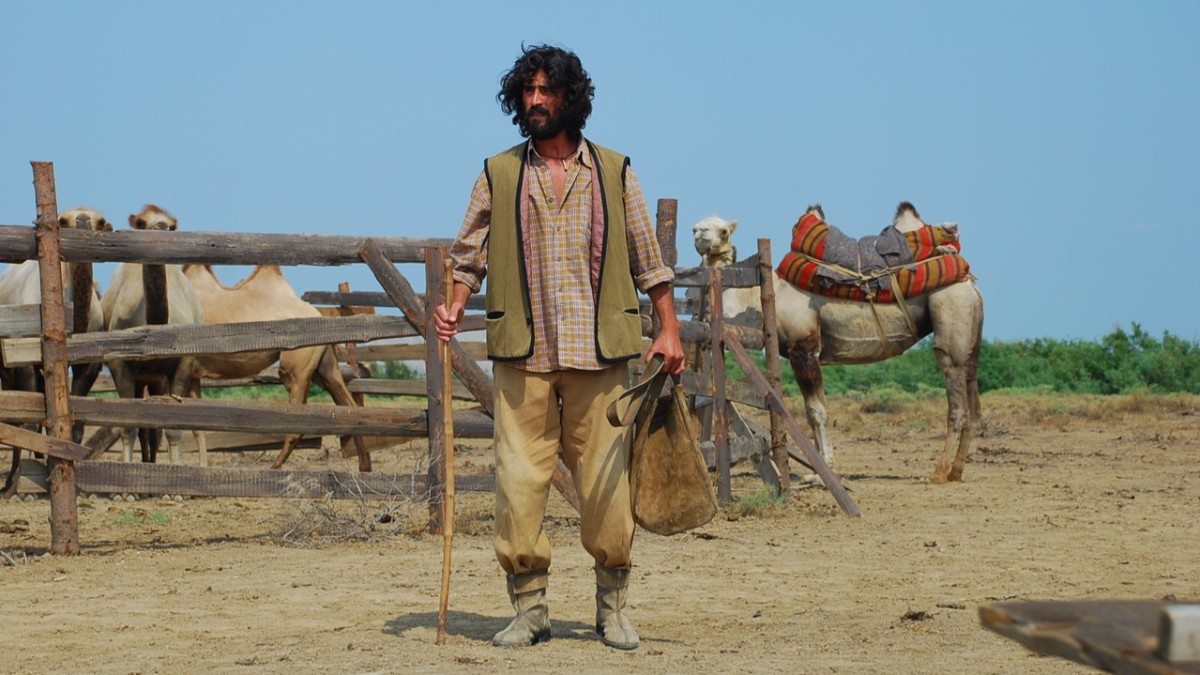
A Case Study
Narrative | Dramatic Features
Film Name: STEPPE MAN
Genre: Drama
Date: the completion date for the film 20xy
Director: Shamil Aliyev
Producer: Shamil Aliyev, Mushfig Hatamov
Writer: Vidadi Hasanov
Cinematographer: Rafig Guliyev
Production Company: Azernaijanfilm Film Studio after name C. Cabbarly
Budget: 1,100,000 Euro
Financing: Ministry of Culture and Tourism of the Republic of Azerbaijan
Shooting Format: 35MM
World Premiere: globalcinema. online
Awards: “Best Feature Film” at the 9th Global Nonviolent Film Festival
Website: https://www.azerbaijanfilm.az
An brief introduction to Director Shamil Aliyev
Shamil Aliyev is a screenwriter, producer, and director from Azerbaijan. He was born on June 26, 1960, in Baku. After graduating from Azerbaijan State Institute of Culture in 1989, he worked as a film director at Azerbaijanfilm, the state-owned movie studio. However, Confession, his first feature was made independently.
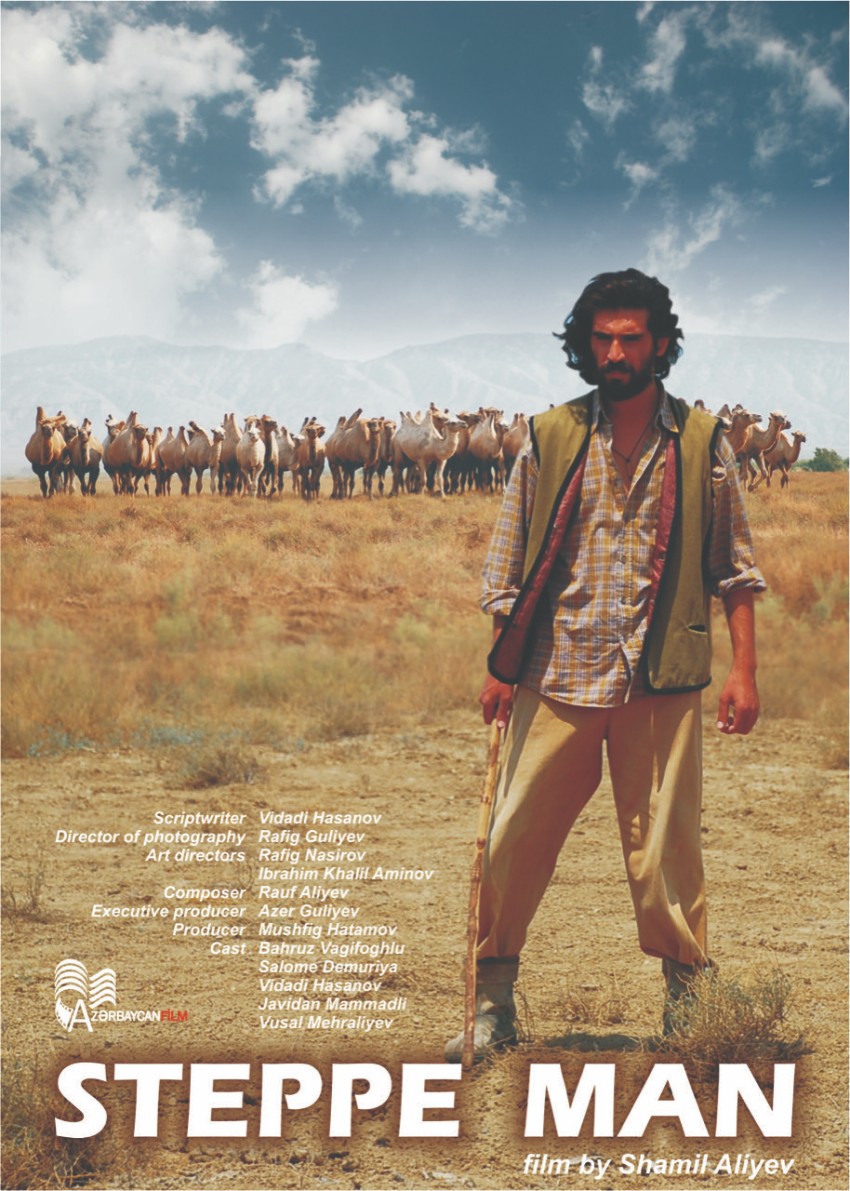
A Working History
Shamil Aliyev has predominantly worked as a director in Azerbaijan, for instance, he worked on various National TV Channels, as well as being the creator of several of these TV projects. To mention a few, these projects are such as Film Media, Cinematography, and Classicists and Contemporaries. dedicated to such cinematographers as “Alfred Hitchcock”, “K. Zanussi”, “Andrei Tarkovski”, and others. In 1999 he shot his short fiction film Occasional Meeting (35mm).
A Brief Social Influence
He is also a founder and director of NURFILM Production Center. Shamil Aliyev served as Chairman of the jury of the 5th International Film Festival START (AZERBAIJAN) and was a Member of the Jury of the 5th Noida International Film Festival, of the 7th Art Independent International Film Festival, and of the 10th Global Nonviolent Film Festival
indieactivity: Introduce your film?
Shamil Aliyev (SA): A young steppe dweller lives far away from cities, closely interacting with nature. His father (Ulu) teaches him all the tricks of life on the steppe. Shortly after his father’s death, he meets a girl from the village. Upon meeting her a new chapter in his life begins, a larger, hitherto unknown kind of life.
The Logline for Steppe Man
This is a story about a man with no name; one who exists and survives on the grassy plains in between Russia and northern Iran, away from civilization.
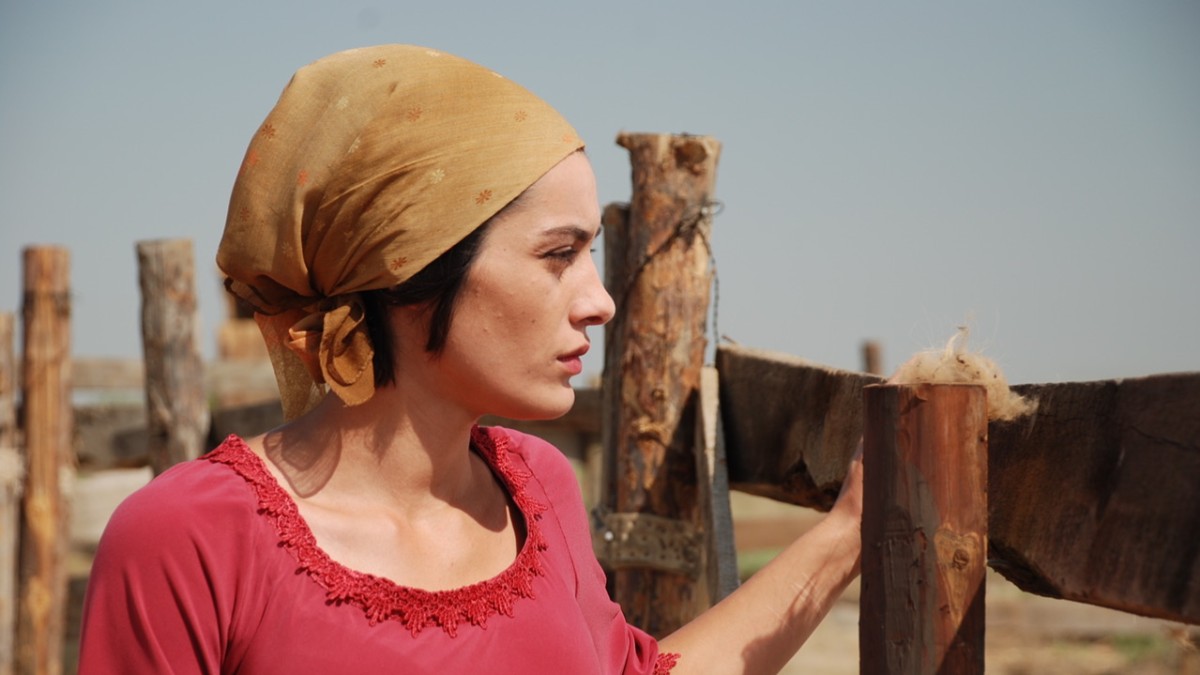
The Story of Steppe Man
A small whirlwind drifts across the vast steppe and gradually dissolves, followed by the crawling of a turtle. The montage of these two visual sequences at the beginning of the film metaphorically describes the subject and how the story will be told. Tales of atmospheric turmoil and moments of calm in and unto itself, of life in the countryside of the Azerbaijani desert, of a pace of life beyond civilization.
A camel is born and Old Ulu plays with soapstone figures and tells his son, who he only calls Steppe Man, a story. It is the legend of the Steppe Man, who is sitting outside one day in the shade of a rock and tending his herd of camels. A hoopoe bird lands on the rock and transforms into a beautiful young woman. This legend from his childhood turns into a magical reality for the grown-up boy, who has taken over his father’s flock and cabin after his death.
The Story of Steppe Man Continued
One day, out of nowhere, a woman appears in the steppe, now split right down the middle by a noisy highway. She has left her husband’s car after an argument and now she is here. Like a fairy godmother, she tidies up the cabin and cleans the windows. He tries to send her away, but she stays. A story begins for the camel herder and the woman from the distant city, an escapee from civilization. This story will turn over a new leaf in their lives and change them both.
The question of what is important? What is worthwhile in life?
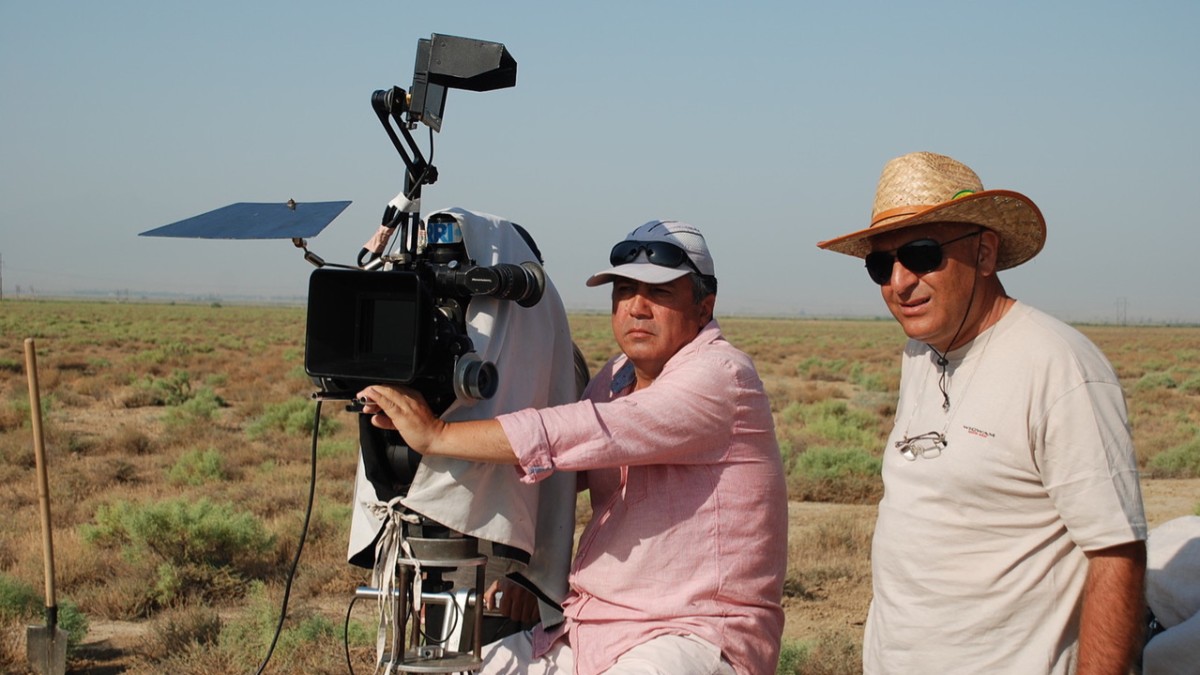
This fairy tale for adults, a cinematic quest for identity, finds answers not in words but in pictures. And, except for a few melodramatically pointed sequences – the jealous husband of the woman shows up in front of Steppe Man’s cabin – this film works mostly in calm images, giving this legend, with all its metamorphoses and twists, its very own mythological truth.
Tell us why you chose to make this film?
Shamil Aliyev (SA): When I’m preparing to shoot some film, I clearly set a goal and later works are carried out in the scenario. The situation was a little bit different in the case of “The Steppe Man.” I have proposed a scenario of “The Steppe Man” which was the third version of Vidadi Hasanov. Nevertheless, while focusing the scenario around a certain goal, I made some changes and in the end, the film you have seen was made.
What is the source of the idea? How did the story develop from the idea? And how did the story evolve into a screenplay? Why do this story? Do you have a writing process?
Shamil Aliyev (SA): Life is not a myth, but a mythological reality. While watching the film, the audience may feel that the director is sick of the artificiality of urban life and tries to explore the core values of humanism in the landscape of grassy plains in between Russia and northern Iran. The culture of Iranian Azerbaijanis, our kin, has a very important place in the memory of Azerbaijanis.
In addition to our common sacred, metaphysical values, we have a common language. However, with Russia, there is a compulsion of living in certain segments of history and feeling the impacts of other civilizations. As a sacred area, “Steppe” was a dream of “returning to the root” and feeling the soul of our ancestors for me.
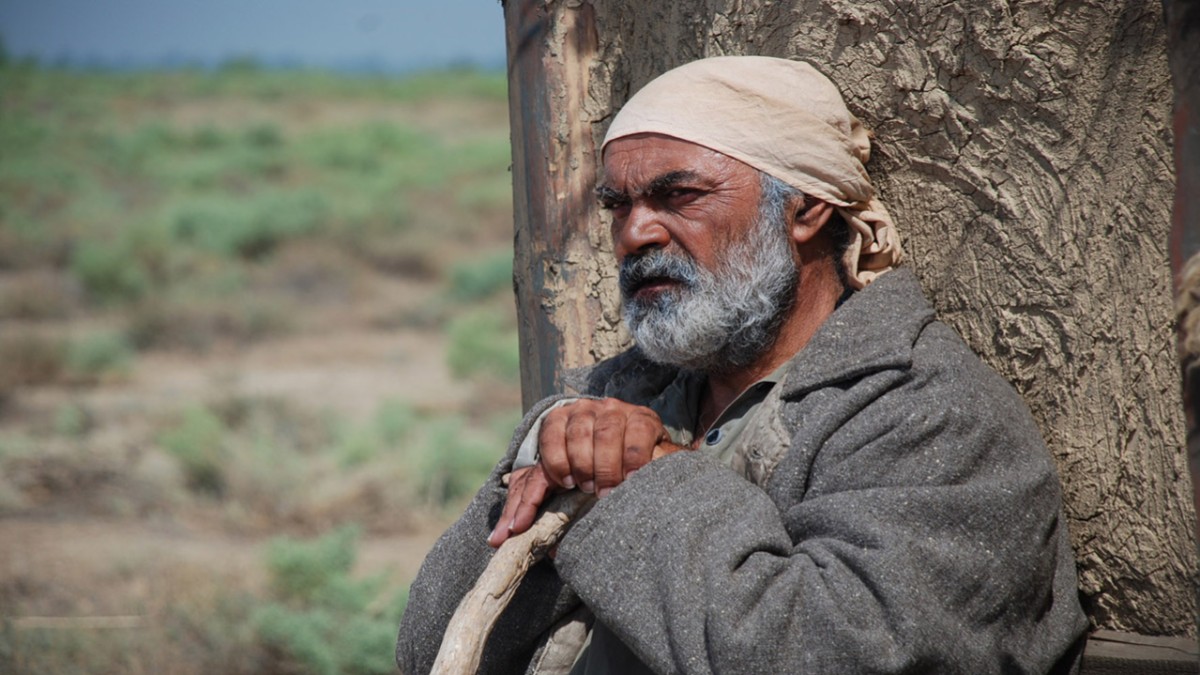
Let’s talk pre-production: take us through a timeline of how you started and ended it?
Shamil Aliyev (SA): The pre-production stage lasted four months. In this period, we finished casting, picking locations, and building sets in the studio and in nature.
What was your rehearsal process and period?
SA: I love rehearsing with actors. I was rehearsing with actors during the pre-production and film shooting process. We invited Salome Demuria from Georgia and we involved Mehriban Zeki as a tutor to help her speak in Azerbaijani. We filmed “Steppe Man” in Azerbaijani.
How long was the shooting period?
SA: We aimed to finish the film in 57 shooting days and our crew completed it in 40 days.
Did the tight shooting schedule make it harder or easier? How did it affect performances?
SA: The tight shooting schedule had its advantages and disadvantages. “Steppe Man” is in 35mm format, and its location was at the Goranboy steppe, in Azerbaijan. The film processing lab was Gorky Film Studio, in Russia, and it caused some difficulties and increased responsibility for the crew.
During the film production, what scene was the hardest to shoot? And why?
SA: It was the scene where “mother camel” didn’t accept baby camel and then Ulu swore on bread and salt. After that, “mother camel” accepted her baby. We shot that scene in a single take.
What worked better in this latest production that mightn’t have worked so well in the last one you did?
SA: The 35mm format holds is the film format for “Steppe Man”. In other words, the intention of the crew is very serious.
What were the advantages and disadvantages of the way you worked?
SA: Azerbaijan’s own film industry came from its separation and independence from the USSR. It is not without its own problems.
What was the experience like of working with a small shooting crew?
SA: Quickness and faster performance.
The film looks stunning. How did you get such a good look?
SA: Exact intention, idea, and the precise line of the theme.
What was the original motivation for opening your own production company?
SA: The dream of being able to bring my ideas and thoughts to life through the medium of film.
Which is your first project out of the gate?
SA: “Confession” (Full-length feature film, 1992).
Where do you think your strengths lie as a filmmaker?
SA: I try to stay loyal to my ideas and not to repeat someone in a primitive way.
How did you finance the film?
SA: The finance for the film is both independent and state investment.
How important is marketing? Talk about the festival tour? Do you think a project can make a dent without it nowadays?
SA: Azerbaijan is a country still in the process of establishing its film industry. Participation in international film festivals is especially important as it increases exposure for a film, it increases its chance for distribution offers, and it helps the overall marketing.
What do you hope audiences will get from the presentation of your film?
SA: Its participation at 123 international film festivals, Best Feature Film award at the Global Nonviolent Film Festival with other awards, “Steppe Man” is an audience favorite.
Where can anyone watch the film today?
SA: It is available worldwide at globalcinema – a unique streaming channel for nonviolent films. This offer for a contract with Global Online Cinema is in the film’s participation at the 2021 Global Nonviolent Film Festival.
What else have you got in the works?
SA: My two scripts “Khali” and “Maiden’s Tower” are ready and I am looking for financial resources.
Tell us what you think of the Case Study for STEPPE MAN. What do you think of it? Let’s have your comments below and/or on Facebook or Instagram! Or join me on Twitter.
Follow Shamil Aliyev on Social Media
Website
IMDb
LinkedIn
Instagram
MORE STORIES FOR YOU









